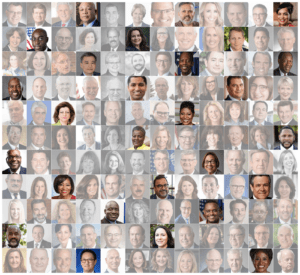
Twelve years ago, Good Jobs First wrote about the problems with privatized bodies given the reins to oversee economic development functions for states, including the doling out of public incentives.
We found the privatized boards to be characterized by the misuse of taxpayer funds, apparent conflicts of interest, questionable subsidy awards, exaggerated (even made-up) job-creation claims, lack of public disclosure of key records, and resistance to basic oversight.
Unfortunately, those problems persist. And going a step further, our new analysis makes clear many of the boards themselves don’t reflect the make-up of the states they purport to represent.
By analyzing the nine privatized state economic development corporations (PSEDCs) featured in our 2013 study, we found that of 140 seats, fewer than 20% were held by people of color. Some states, including Virginia and Wyoming, had no people of color at all, according to a new Good Jobs First report, Unequal Racial Representation on Privatized State Economic Development Corporation Boards.
“Embracing racial diversity within these boards is not just a moral imperative, but a strategic tool to ensure states invest in long-term, sustainable, and inclusive economic growth,” said Nya Anthony, a Good Jobs First research analyst and the report’s primary author. “It is time for state leaders to review board appointment processes to ensure people of all backgrounds are represented in decisions that impact a wide range of business types, sizes, and ownership-structures, especially when they involve the exchange of taxpayer dollars to private companies.”
The analysis also found:
- White people occupy more seats than all board members of color combined. Of 140 available board seats, members identified as white outnumbered their non-white counterparts by more than 4 to 1, as people of color held just 27.
- Hispanic people are the most underrepresented on PSEDC boards. Hispanic people held just six of 140 seats – less than 5%.
- People of color are better represented in some states than others. The Michigan Economic Development Corporation has the most comprehensive representation of non-white board members compared to its population—45% of board members were Black, Asian or Hispanic, compared to representing 23% of the population. The opposite is true in PSEDCs like the Virginia Economic Development Partnership and the Wyoming Business Council, which have no racial or ethnic diversity on their boards despite both states having a considerable Hispanic population and Virginia’s sizeable presence of African and Asian Americans.
All of us are best served by experienced public-agency employees who are fully covered by ethics and conflicts laws, open records acts, and oversight by auditors and legislators. That board should be reflective of its residents.
Read the full report.